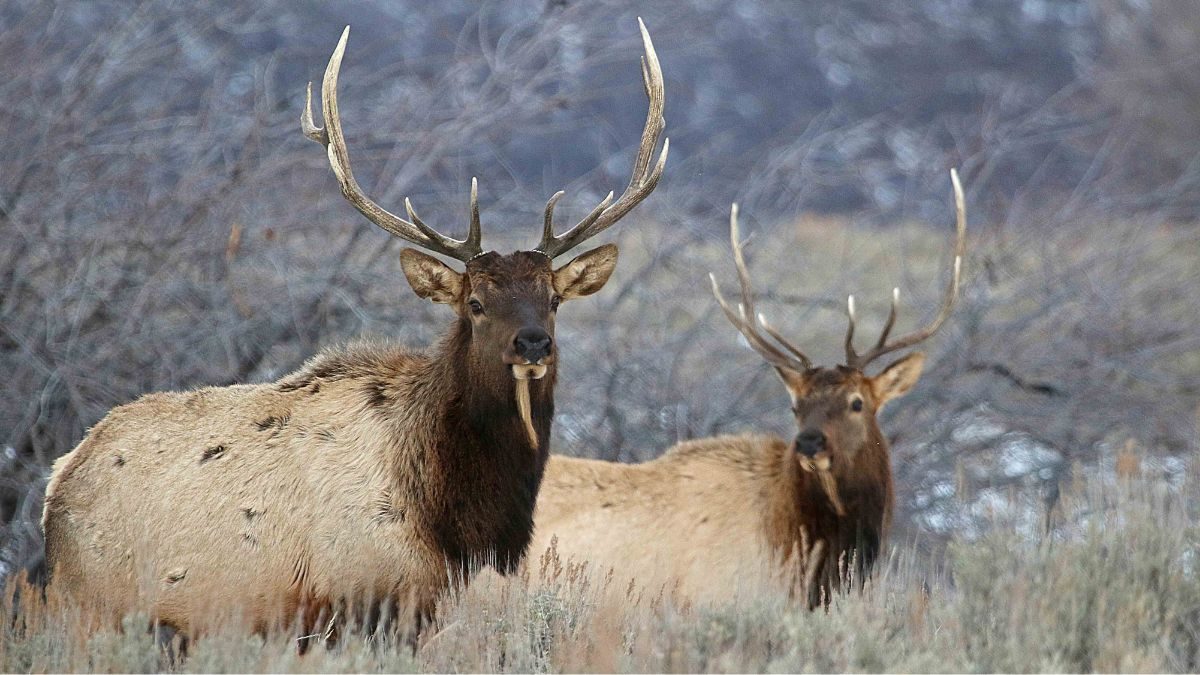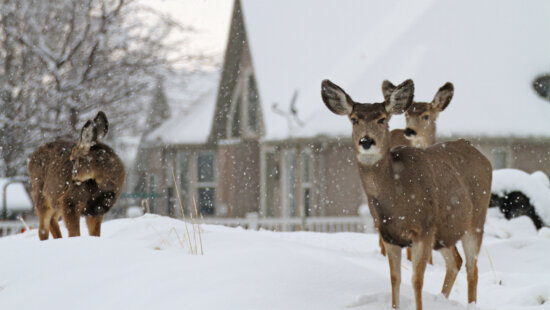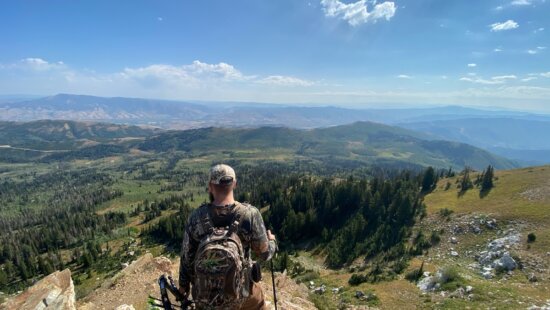Wildlife
Utah Wildlife Board approves new statewide elk management plan

The Utah Wildlife Board has approved a new 10-year Utah Statewide Elk Management Plan. Photo: Utah Division of Wildlife Resources
UTAH — The Utah Wildlife Board approved a new 10-year statewide elk management plan at its meeting on December 1.
The current statewide elk management plan was created in 2015, updated in 2020, and is set to expire this month.
According to a press release from the Utah Department of Natural Resources, a 19-person committee was convened to help create the updated management plan using in-depth elk research, public surveys, and the current state of Utah’s elk herds.
“The committee included hunters, members from state and federal agencies, conservation groups and academia as well as private landowners, agricultural producers and members of the public,” said the press release. “This new proposed management plan will go into effect in 2023 and will guide the state’s elk management until 2032, with a review in 2026.”
According to the DNR, approved general-season hunting changes include:
- Removing multi-season permits for the any bull elk hunt. (There will still be a multi-session option for spike bulls, and anyone with a multi-season spike bull elk permit can still participate in both the spike and any bull hunts during the archery season.)Adding six additional general-season hunting units/areas to the any bull elk hunt.
- Dividing the current general-season 13-day any legal weapon any bull hunt into two separate seven-day hunts.
- Issuing 15,000 general-season permits for the early season any-legal-weapon any bull hunt.
- Having no cap on permit numbers for the late season any-legal-weapon any bull hunt.
- Expanding the general spike hunt to the Diamond Mountain unit.
- Continuing to issue 15,000 spike bull permits each year, with a cap of 4,500 available as multi-season permits.
- Creating an unlimited youth general-season elk permit that will be valid during all general seasons on both any bull and spike units.
- Discontinuing the limited-entry bull elk hunts on the Paunsaugunt Unit and converting them to general-season any bull hunts. However, the hunts won’t include archery — only rifle and muzzleloader. This will be reviewed during the three-year management plan review in 2026.
“The demand for elk hunting in Utah has continued to grow over the years,” Dax Mangus, DWR Big Game coordinator, said in a press release. “In 2014, the over-the-counter any bull elk permits sold out in 77 days, and the spike-only elk permits sold out in 84 days. In 2022, the any bull elk permits sold out in five hours and the spike elk permits sold out in only nine hours. We want to implement several strategies to respond to these dramatic increases in demand for general-season elk hunting opportunities, as well as find ways to address continued ‘point creep’ in the limited-entry system.”
Approved limited-entry hunting changes include:
- Restructuring the harvest age objectives for traditional limited-entry units to include three age objectives: 6 ½ to 7 years old, 6 to 6 ½ years old and 5 ½ to 6 years old.
- Adding the mid-season any legal weapon hunt on most traditional limited-entry elk units.
- Adjusting the weapon splits for traditional limited-entry hunts to place more of the any-legal-weapon hunts in the mid-season hunt.
- Moving the season dates for the beginning of the hunt and end of the traditional limited-entry archery season to four days later than in past years.
- Adjusting the length of the early any-legal-weapon traditional limited-entry elk hunt to five days long.
- Maximizing hunting opportunities by maintaining some units/hunts managed for September archery hunts and HAMS hunts (hunts that allow the use of handgun, archery, muzzleloader, and shotgun).
- Developing and recommending adaptive opportunity limited-entry hunts to seize unusual opportunities. Examples include December archery hunts on limited-entry units, HAMS hunts on units with very high success rates and/or high bull-to-cow ratios, and limited-entry hunts on general-season units using unique timing or the migration of available bulls.
“The major theme for the elk plan committee — and the resulting plan — was to increase elk hunting opportunity, while maintaining quality, through increased challenge and creativity,” Mangus said. “We believe these approved changes will help reach those goals. These changes are all related and provide synergy to the overall management plan, with the general-season hunt changes providing additional opportunities and the limited-entry changes helping maintain the quality of the hunt.”
Individual elk-management unit plans will be revised in 2023 and will go out to the public for feedback if they include changes to hunting unit boundaries or population objectives.




















